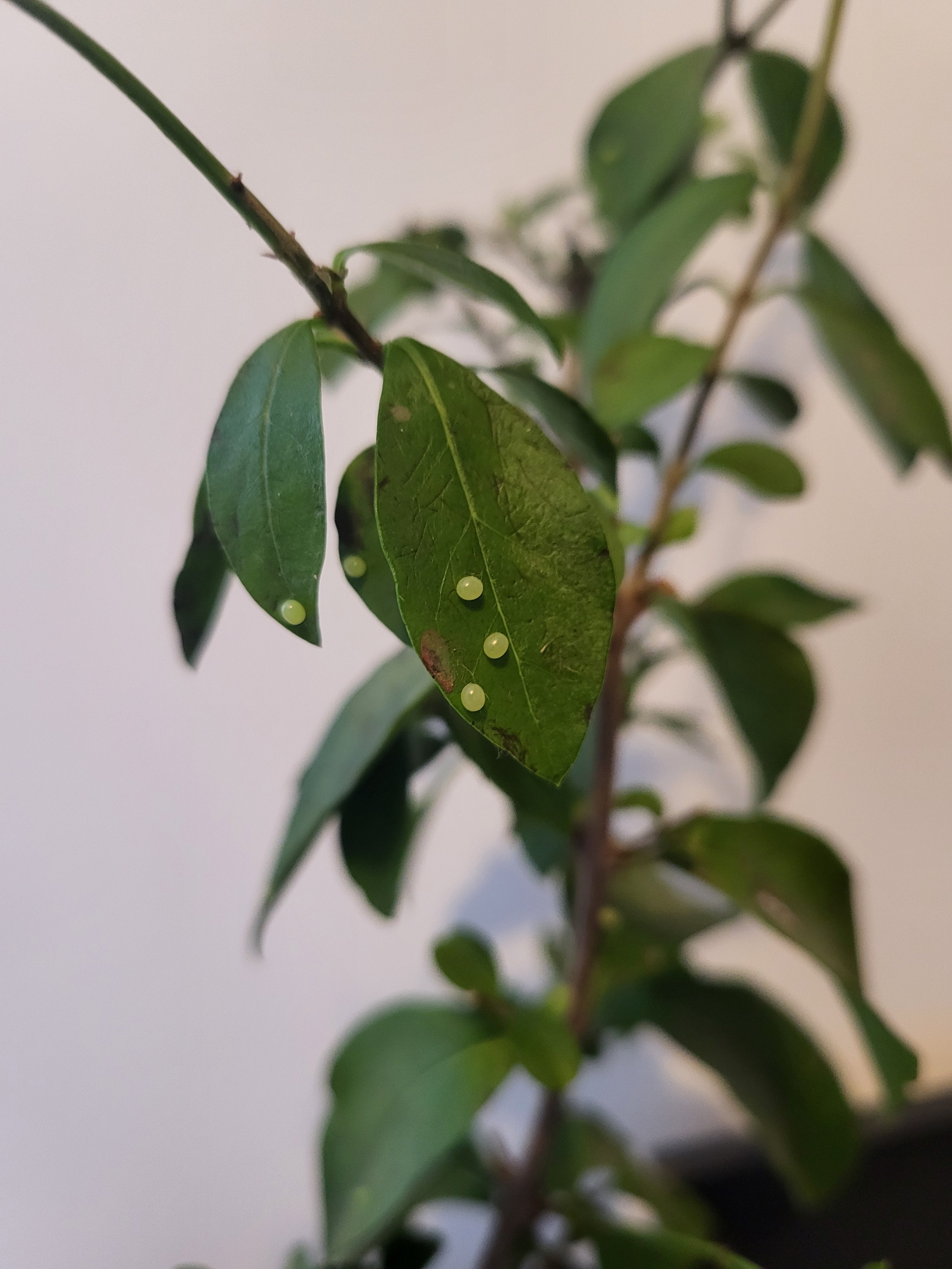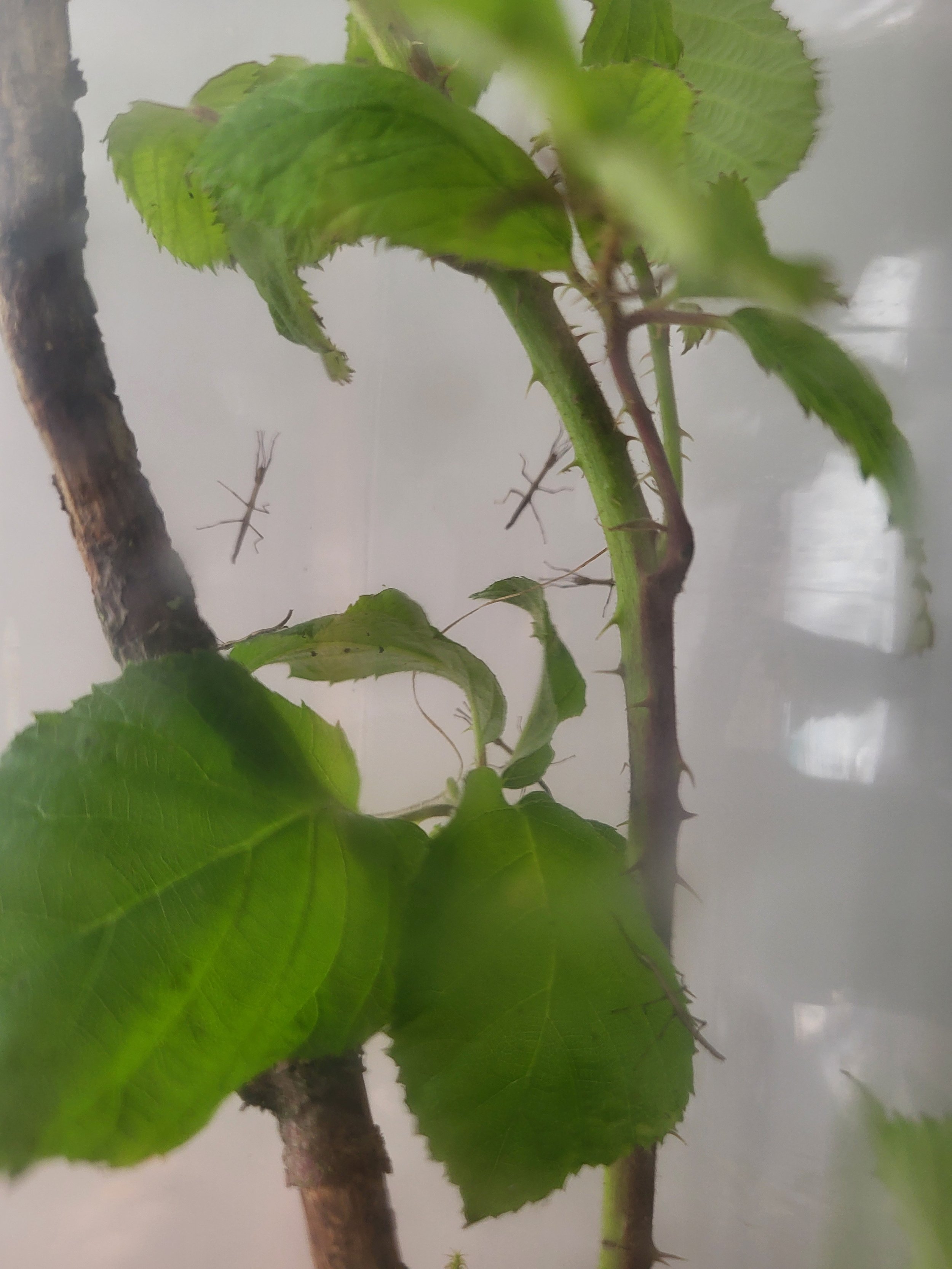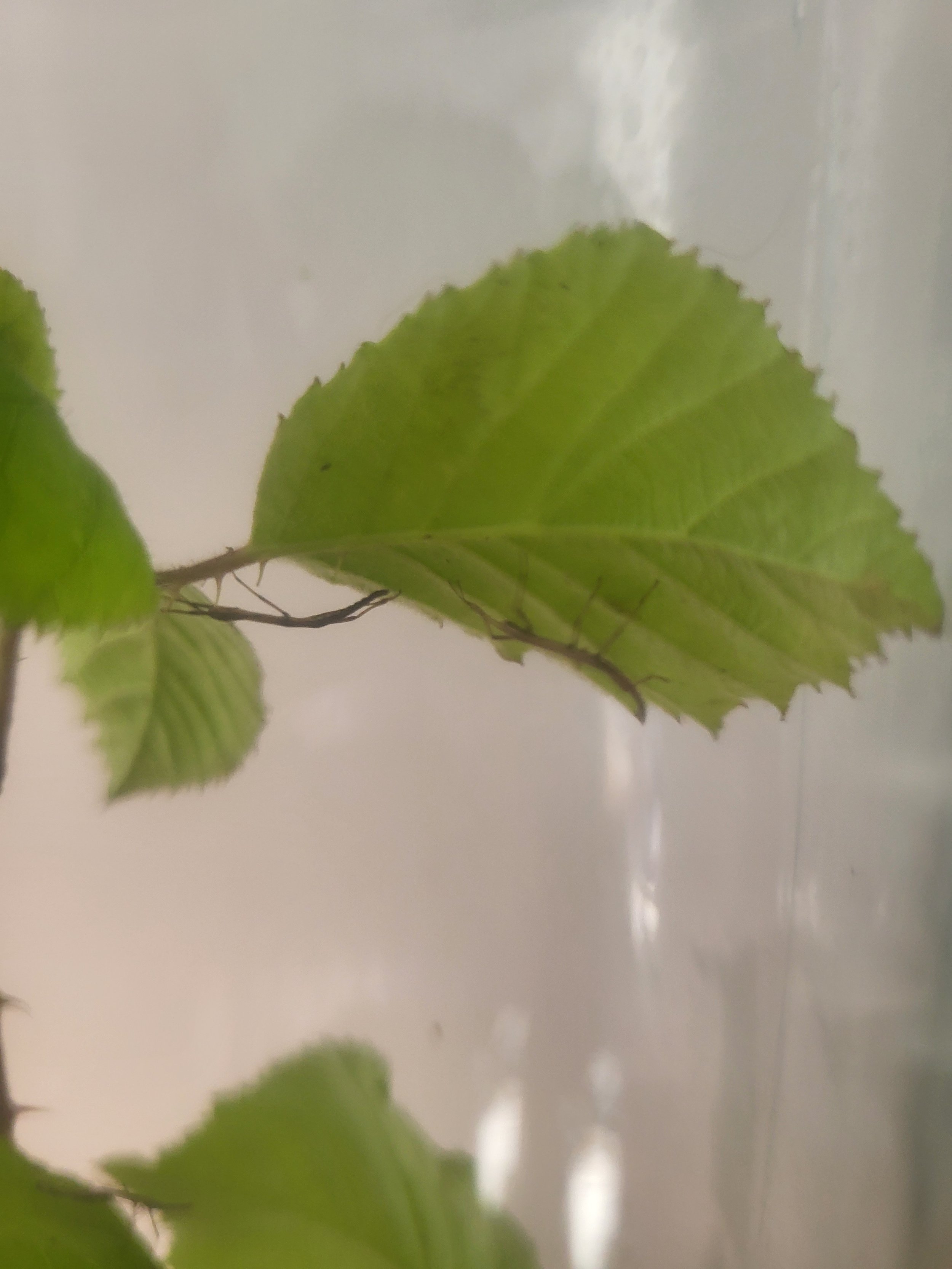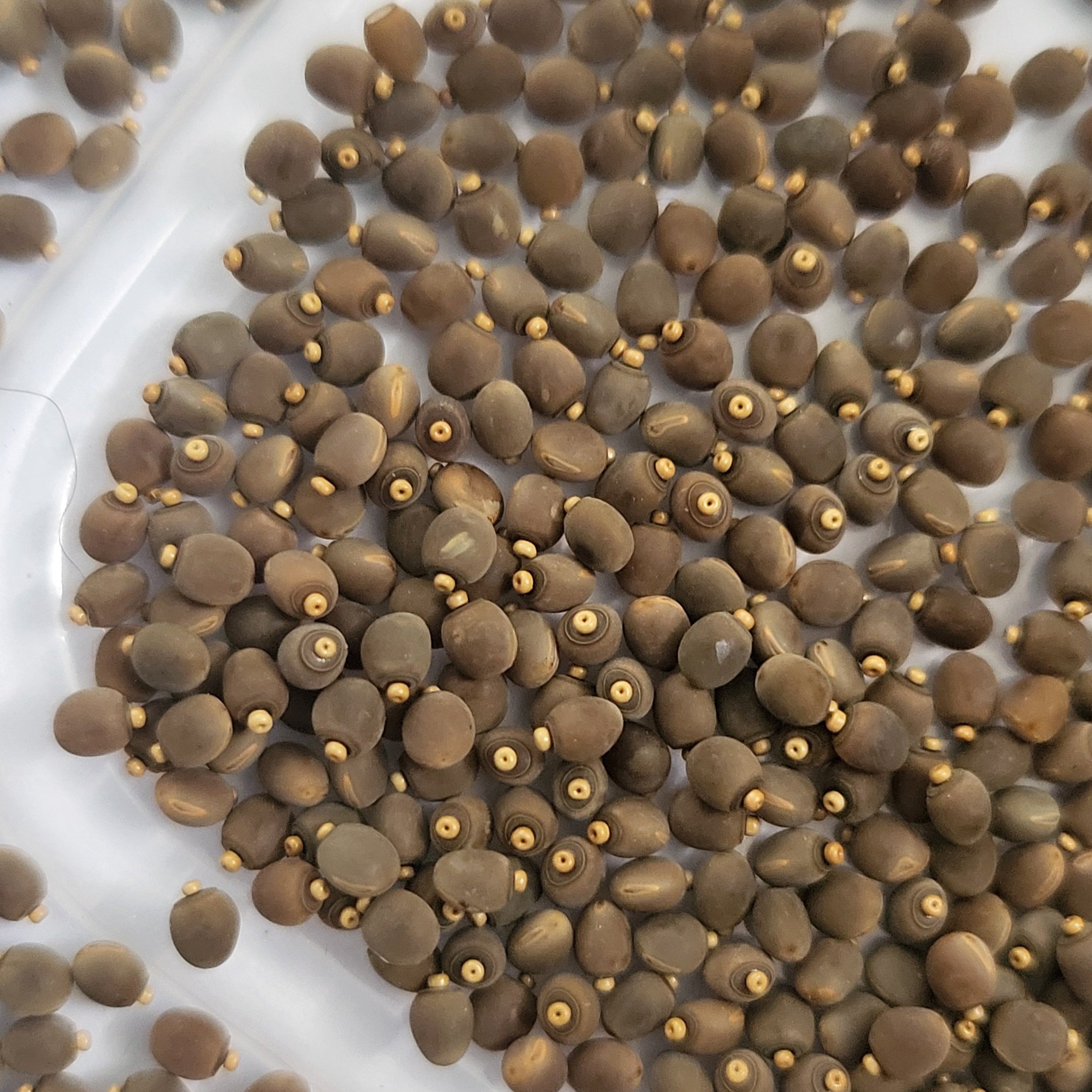 Image 1 of 1
Image 1 of 1


15 Deathshead Hawk Moth Eggs/L1 Larvae - Acheronia atropos
15 Deathshead Hawk Moth Eggs/L1 Larvae.
Host Plants: Privet, Lilac, Ash, Potato, Tomato; other Solanum.
Hatching Time: ~ 7 days after laying
One of the most iconic moths in the world, their caterpillars are equally as stunning!
The moths are famous for their skull markings - featuring on the cover of the Silence of the Lambs. Deathshead Hawk moths originate from Africa, the Middle East and parts of Europe - a large moth with a wing span of up to 13cm.
The eggs should hatch 7-10 days after laying and will need to be moved into a small plastic container lined with kitchen roll with some fresh host plant. Do not add plants in with your eggs. You will need to clean your caterpillars daily and provide them wish fresh food. As they grow you will need to move them to a larger tub, and from L3 onwards I would recommend moving them to a net cage. It is important that you provide fresh food and clean out their frass (poo) daily in order to have happy, healthy caterpillars.
In their larger stages they can eat a lot, to ensure you have a good supply of host plant available.
After 4-6 weeks your caterpillars should be getting ready to pupate, you will be able to tell when this is the case as they will leave their food plant and begin to wander - they will also change colour slightly and gain a waxy appearance. In order to pupate Deathshead hawkmoths needs to burrow - they can do this in soil or you can provide an alternative material (shredded kitchen roll works well). Simply move your caterpillar to a tub of suitable material and they will find a spot to pupate (they can sometimes spend a couple of days before they settle, don’t worry). Once they have pupated leave them in situ for a couple of weeks to fully form and for their pupae to harden. After a couple of weeks you can place them on some kitchen roll on the bottom of a net cage and wage for them to emerge - it is important that there is somewhere for them to climb and expand and dry their wings, a net cage is perfect for this.
Once your moths have emerged you will need to begin feeding them by hand (they probably wont want to feed for the first couple of days). To feed them you will need to pick them and uncurl their proboscis using a tool like a cocktail stick and place it in to a 50/50 honey/water mixture. They will squeak and may put up a fight the first few times but the y will get used to it. I would recommend feeding every other day. (There are plenty of videos on YouTube and TikTok showing how to do this).
With the correct care your moths can live 4-8 weeks!
15 Deathshead Hawk Moth Eggs/L1 Larvae.
Host Plants: Privet, Lilac, Ash, Potato, Tomato; other Solanum.
Hatching Time: ~ 7 days after laying
One of the most iconic moths in the world, their caterpillars are equally as stunning!
The moths are famous for their skull markings - featuring on the cover of the Silence of the Lambs. Deathshead Hawk moths originate from Africa, the Middle East and parts of Europe - a large moth with a wing span of up to 13cm.
The eggs should hatch 7-10 days after laying and will need to be moved into a small plastic container lined with kitchen roll with some fresh host plant. Do not add plants in with your eggs. You will need to clean your caterpillars daily and provide them wish fresh food. As they grow you will need to move them to a larger tub, and from L3 onwards I would recommend moving them to a net cage. It is important that you provide fresh food and clean out their frass (poo) daily in order to have happy, healthy caterpillars.
In their larger stages they can eat a lot, to ensure you have a good supply of host plant available.
After 4-6 weeks your caterpillars should be getting ready to pupate, you will be able to tell when this is the case as they will leave their food plant and begin to wander - they will also change colour slightly and gain a waxy appearance. In order to pupate Deathshead hawkmoths needs to burrow - they can do this in soil or you can provide an alternative material (shredded kitchen roll works well). Simply move your caterpillar to a tub of suitable material and they will find a spot to pupate (they can sometimes spend a couple of days before they settle, don’t worry). Once they have pupated leave them in situ for a couple of weeks to fully form and for their pupae to harden. After a couple of weeks you can place them on some kitchen roll on the bottom of a net cage and wage for them to emerge - it is important that there is somewhere for them to climb and expand and dry their wings, a net cage is perfect for this.
Once your moths have emerged you will need to begin feeding them by hand (they probably wont want to feed for the first couple of days). To feed them you will need to pick them and uncurl their proboscis using a tool like a cocktail stick and place it in to a 50/50 honey/water mixture. They will squeak and may put up a fight the first few times but the y will get used to it. I would recommend feeding every other day. (There are plenty of videos on YouTube and TikTok showing how to do this).
With the correct care your moths can live 4-8 weeks!


